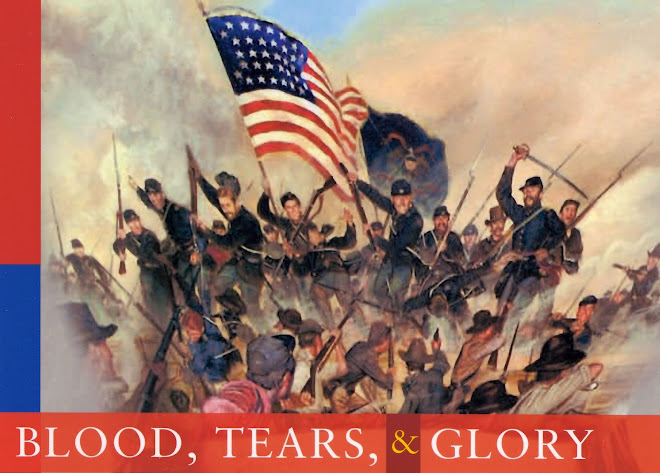“A medley of hills”
Western Virginia—the region of Virginia that will become the state of West Virginia—is vitally important to the Union, for it holds a major key to the Western Theater.
This part of Virginia is shaped like a wedge and, left in the hands of the Confederates, it could split the Union in two. All that connects the northeastern Union states to the Midwest is a narrow sleeve of land lying along Lake Erie. Pushing its nose against that sleeve like a hungry bear, western Virginia shoulders its way between Ohio and Pennsylvania.
Given half a chance, that bear could rapidly chew through Ohio’s land bridge to the Northeast And, letting the Confederates reclaim western Virginia could cut the Midwest’s direct connections to the nation’s capital: the Baltimore and Ohio Railroad, telegraph lines, and turnpikes, all of which run through western Virginia. And the region could turn in to a convenient launching pad for Confederate attacks on Ohio and other Midwest states.
Despite its importance, the Union soldiers occupying western Virginia—and even the Confederate remnants still clinging to its edges—loathe the region. (One Confederate called it “the most God-forsaken country I ever laid eyes on” and another claimed, “This country is not worth fighting for.”) Western Virginia in 1862 is an impoverished, isolated land of steep hills and tiny valleys. It is a land, as Union Brig. Gen. Jacob D. Cox of Ohio would later put it, that is “a succession of ridges and a medley of hills.” Loyalists to the Union may dominate the civilian population here, but scattered among the loyalists are more than enough Confederate sympathizers to provide plenty of bushwhackers and guerrillas. These feared and hated irregulars take advantage of the wild landscape to harass Union forces with lightning-quick attacks on messengers, sentinels, and outposts.
Nobody wants out of western Virginia more than Cox, who is in command of the Kanawha Valley district of western Virginia, with headquarters in Charleston. To an ambitious Union officer like Cox, western Virginia is a backwater in the war with plenty of headaches and few opportunities for glory and promotion.
In December, Cox received orders directly from Washington reassigning him to Kentucky where—presumably—more action is to be had. Cox’s hopes were dashed, however, when his superior, Gen. William S. Rosecrans, commander of the Department of Western Virginia, denied Cox his opportunity, saying he needed him right where he was. “There was nothing to be done but summon philosophy to my aid, and to hope that all would turn out for the best,” Cox concluded glumly.
And so, during this winter in western Virginia, Brigadier General Cox settles down to weeding out poor performers in his ranks and training the rest. The mixed local population of loyalists and Confederate sympathizers creates endless headaches, between the guerrillas and the runaway slaves seeking sanctuary. “My experience during the winter begot in me a rooted dislike for the military administration of the border districts,” Cox will recall in his memoirs. He will not escape from western Virginia’s “succession of ridges and medley of hills” until August 1862.
IT’S COMING SOONER THAN YOU THINK: April 12, 2011—less than 3½ years from now!—will be the 150th anniversary of the outbreak of the Civil War. In 1861, April 12 was the day Confederates opened fire on Fort Sumter in Charleston Harbor.
Your suggestions, comments, and questions about this blog are always welcome. Address the author: Ohioan@bloodtearsandglory.com
For more information about the author and his newest book, please go to http://www.orangefrazer.com/btg



No comments:
Post a Comment